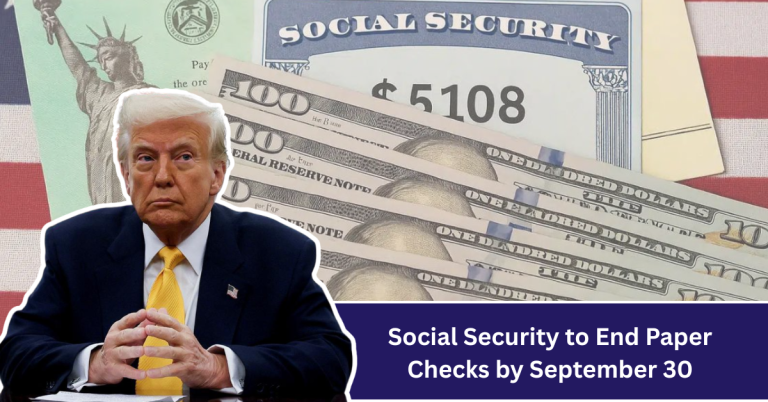
Social Security has been a reliable source of income for millions of people in the United States. Traditionally, many recipients received their payments through paper checks mailed to their homes. However, with increasing digitalization and the push for faster, safer transactions, the system is moving away from paper checks. This change marks a big shift in how social security payments are delivered.
The former President Donald Trump has played a significant role in pushing for an overhaul of the Social Security payment system. His administration aimed to modernize payments to reduce costs and fraud. In this article, we will explore the reasons behind this change, its benefits, and what it means for Social Security recipients across the country.
Why Social Security Is Phasing Out Paper Checks
The Social Security Administration (SSA) decided to phase out paper checks to improve efficiency and security. Paper checks can be lost, stolen, or delayed in the mail. This causes problems for recipients who depend on timely payments for their daily needs. Electronic payments, often through Direct Deposit, offer a safer and faster alternative.
Direct Deposit sends payments directly into a bank account, making the process smoother and more reliable. It reduces the risk of fraud and administrative costs associated with processing paper checks. This move is also in line with global trends, as many countries are shifting to electronic payment systems for social welfare programs.
How Donald Trump Influenced Social Security Payment Changes
During his presidency, Donald Trump focused on modernizing government services. One of his goals was to streamline federal payments, including Social Security. The Trump administration supported policies that encouraged the use of electronic payment methods to reduce government spending and errors.
Trump’s push for payment reform also aimed to ensure that Social Security recipients receive their money quickly and without issues. His efforts helped accelerate the plan to phase out paper checks nationwide. While these changes began under his leadership, they continue to impact the Social Security system today.
Benefits of Moving to Electronic Payments
Switching to electronic payments offers several advantages for Social Security recipients. First, it provides faster access to funds since money is deposited directly into a bank account without waiting for the mail. This is especially helpful during emergencies or unexpected situations.
Second, electronic payments reduce the chances of lost or stolen checks, increasing security. Third, recipients can easily track their payments through online banking, providing more control over their finances. Lastly, it saves the government money by cutting down on paper, printing, and postal costs.
Challenges and Concerns for Recipients
While electronic payments are convenient for many, some Social Security recipients face difficulties adapting to the new system. Not everyone has a bank account or easy access to digital banking services. This is especially true for older adults or people living in rural areas without reliable internet.
There are concerns about digital literacy and the security of online transactions. The government needs to ensure that vulnerable populations receive support during this transition. Programs to educate recipients about digital payments and provide assistance for setting up bank accounts are essential for a smooth changeover.
What Social Security Recipients Need to Know
If you or someone you know receives Social Security payments, it is important to be prepared for these changes. The SSA encourages all recipients to sign up for Direct Deposit, which is safe and simple to set up. Many banks and post offices can help with this process at no cost.
For those who do not have a bank account, there are options like prepaid debit cards issued by the government. These cards function similarly to bank accounts and allow electronic deposits of Social Security payments. Staying informed and seeking help can ensure you continue to receive payments without interruption.
Impact on Younger Generations and Future Payments
Younger people who will receive Social Security benefits in the future are likely to find electronic payments entirely normal. The move to phase out paper checks prepares the system for a more digital future. This change aligns with how younger generations use technology for their banking and payments.
As the system becomes fully digital, it will be easier to manage social security funds and reduce fraud. This modernization can make the entire process more transparent and user-friendly, helping younger recipients stay in control of their finances.
Conclusion: A Step Toward a Digital Future
The decision to phase out paper checks for Social Security payments is a significant step toward modernizing government benefits. With support from Trump’s administration, the push for electronic payments aims to improve security, efficiency, and convenience for millions of Americans.
While the change may pose challenges for some, efforts are underway to help all recipients adapt. Moving forward, embracing digital payments will benefit both the government and individuals, making Social Security payments faster, safer, and more reliable than ever before.






